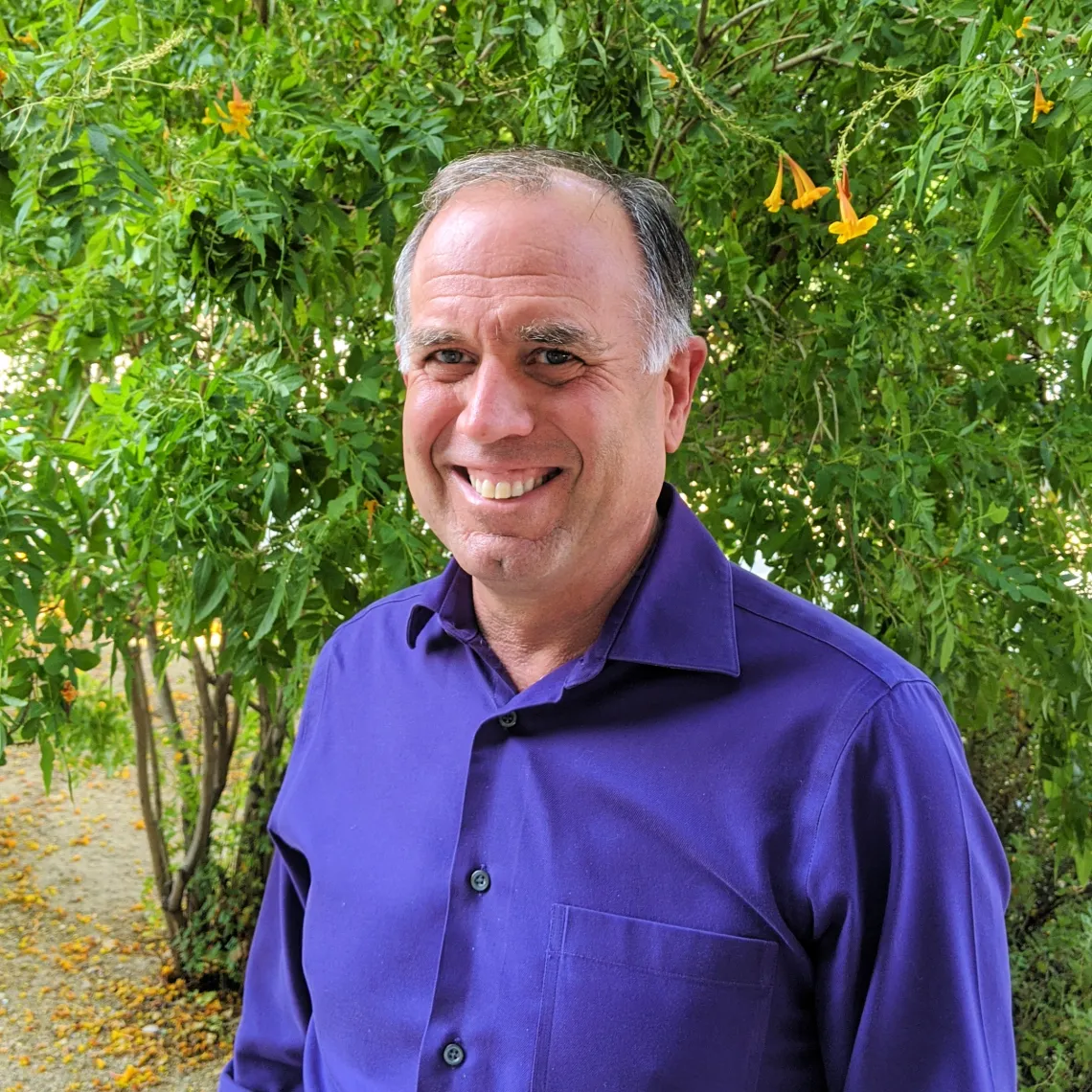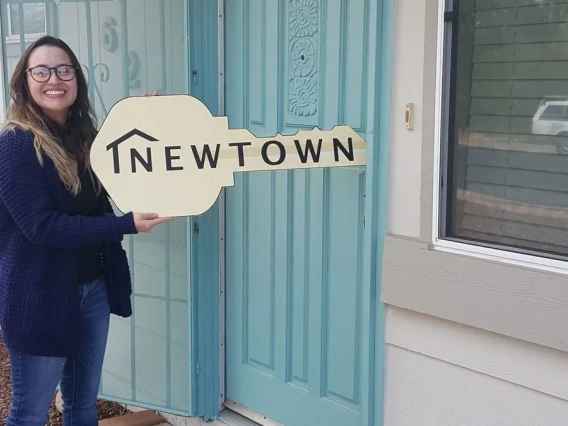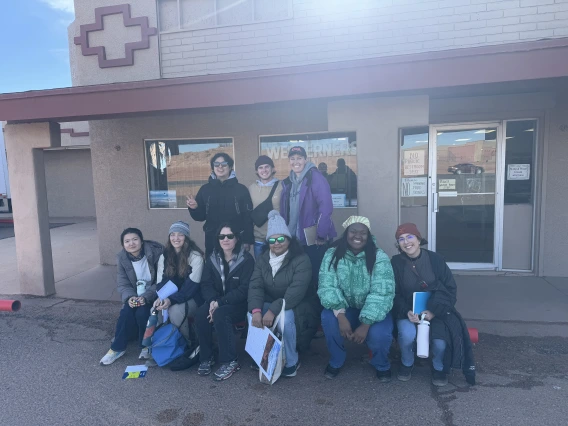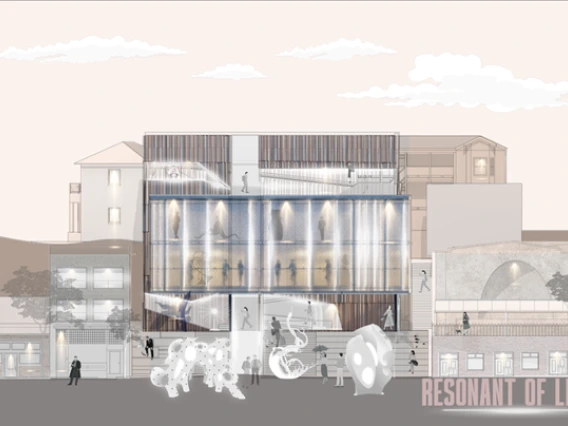Alumni Spotlight: Ed Marley '82 B.Arch

The College of Architecture, Planning and Landscape Architecture is proud to announce Alumnus Edward Marley, FAIA has been elevated to the American Institute of Architects (AIA) College of Fellows.
Marley graduated from CAPLA in 1982. He is the only Arizona-based architect to be elevated to AIA Fellowship in 2024, and one of only 96 people overall to receive the honor this year.
AIA Fellows are recognized with the AIA’s highest membership honor for their exceptional work and contributions to architecture and society. Architects who have made significant contributions to the profession and society and who exemplify architectural excellence can become a member of the AIA College of Fellows. Only 3 percent of AIA members have this distinction.
A principal at the Tucson-based firm Swaim Associates where he has been for more than 40 years, Marley has led projects throughout Arizona and the region. In his career, he has advocated for broadening accessible pathways to architectural licensure, leadership, and education with the goal of creating a more inclusive, equitable, and diverse profession. Here in Arizona, he has served as president of both the AIA Southern Arizona chapter and the AIA Arizona statewide component, and was also a member of the Arizona Board of Technical Registration from 2012 to 2018.
Marley and his class of 2024 Fellows will be honored at the AIA Awards Gala on June 7 at the National Building Museum in Washington D.C. during the AIA National Conference week. He took a moment to share with us his thoughts on receiving the honor, fond memories of his time in college, and advice for students who are beginning their architectural careers.
What does receiving the AIA College of Fellows honor mean to you?
That’s a tough question, it’s incredibly humbling and invokes a lot of different emotions. I would say that my career and this honor are reflections of the people around me who have helped shape me and my career in architecture. From my parents who taught me the value of craftsmanship, hard work and giving back, to Bob Swaim who initially got me involved in the AIA and instilled in me the importance of contributing to the greater community. My firm (Swaim Associates LTD), especially my partners, who have supported me throughout this journey, and have made sacrifices to support my work for the greater good of the profession. Most importantly, my family who, without their sacrifice and support, my involvement in the AIA and NCARB would not be possible. It is great to be recognized for making significant contributions to the profession but that doesn’t happen in a vacuum. I think it also reminds me that my work is not done, I still have more to contribute.
It’s noted that you had a goal for creating a more inclusive, equitable and diverse profession. Could you please describe in detail how you worked toward accomplishing this goal?
It’s no secret that the diversity of our profession is not even close to the diversity of the population we serve as architects. Throughout my involvement in the architecture profession, I have worked to remove barriers to access our profession. Through my service as president of the Cornerstone Building Foundation Charities and my own firm’s Robert Swaim Scholarship endowment, I have been part of an effort to reduce the financial burden of education through scholarships for CAPLA students. At a national level, as a member of the NCARB Board of Directors I have helped move several initiatives forward that have made the ARE (Architect Registration Exam) more equitable through restructuring of exam questions and the rollout of full-length practice exams for every division. In order to increase access to leadership within NCARB, I have established, with the assistance of a volunteer team, the NCARB Leadership Institute, which will provide leadership training for those wanting to serve on NCARB committees and on the board of directors. The ultimate goal is to have a profession that reflects the makeup of the communities we serve.
As a leader within NCARB, what are your goals for the organization?
To continue our work on our diversity initiatives, including Pathways to Practice, which is an ongoing effort to explore multiple pathways to licensure and the certificate. This approach is not unlike the path to licensure here in Arizona where you can become licensed solely with 8 years of diverse experience and passing the ARE. Please understand that I am a firm believer in Architectural Education but there are many who aspire to be an architect who do not have the means to access the education path.
As the organization that is focused on the regulation of the practice of architecture, I am planning to create a NCARB task force to develop model enforcement guidelines for State Registration boards to help ensure a consistent and equitable enforcement policy.
When did you graduate from CAPLA? And what fond memories do you have from your time as a student?
I graduated from CAPLA (back then it was just the College of Architecture) in May of 1982. Our class was incredibly close knit. We formed relationships that have lasted for over 40 years. We hold a class reunion every 5 years and still have 30 or more classmates attend. I also have great memories of some of what I consider the finest professors a student could have. Kirby Lockard, FAIA, Chuck Albanese, FAIA, Bill Stamm, Bob Geibner, Doug Macneil, to name a few. Most are no longer with us, but I do stay in touch with Chuck and he often attends our class reunion gatherings.
What lessons from your time at CAPLA do you carry with you in your professional career?
Every project is an opportunity to learn something new, whether it is a class assignment or an opportunity to design the latest medical facility for a client, we never really leave the educational environment, we just move to a new location.
The importance of deadlines and time management. The time constraints you have in school are still there when you are doing work for clients.
How do you stay connected with your alma mater and why do you believe it’s important do so? I stay connected on two levels, as the past President of Cornerstone Building Foundation Charities I would attend the annual scholarship appreciation events. That celebration is a great opportunity to meet the students, especially our scholarship recipients. Also, as an NCARB Board member and AXP Licensing advisor, I have conducted presentations on the path to licensure for CAPLA students. I also attend homecoming events when my schedule allows.
I believe it is important to stay connected to have an understanding and appreciation of the quality of students that CAPLA is educating. I’m always impressed with their abilities.
What advice can you share with our students who are graduating in May?
Get licensed as an architect! I have talked with many graduates who don’t see the value in licensure, often stating that they don’t plan on ever sealing any documents. Don’t sell yourself short, you don’t know where your career will take you, I never dreamed that I would do projects across the country and be involved on a national board when I started my journey. Being able to seal documents is not the point. Being able to call yourself an architect represents the culmination of years of education and hard work. I can’t imagine not being able to call myself an architect. It’s what I aspired to since I went into high school.



